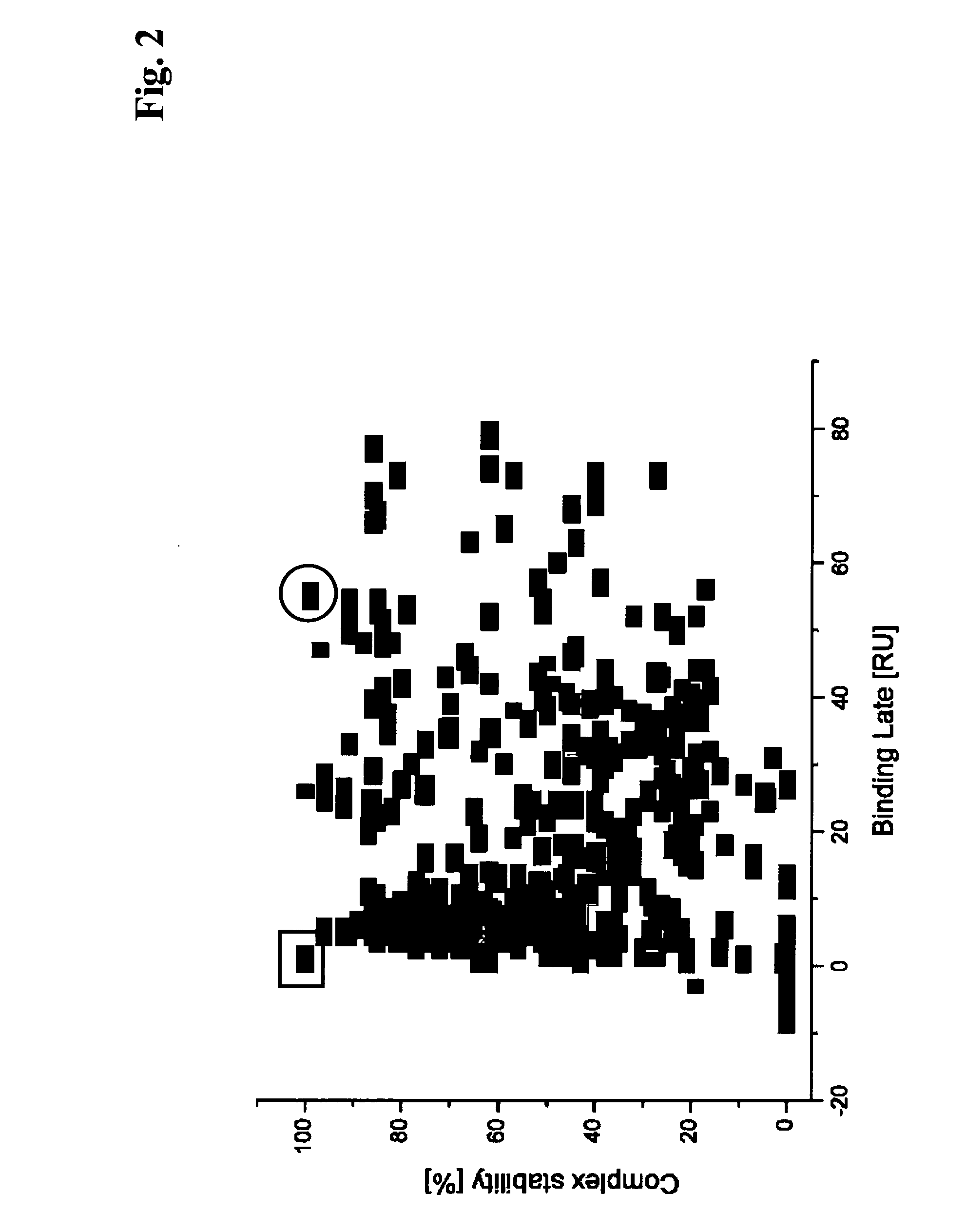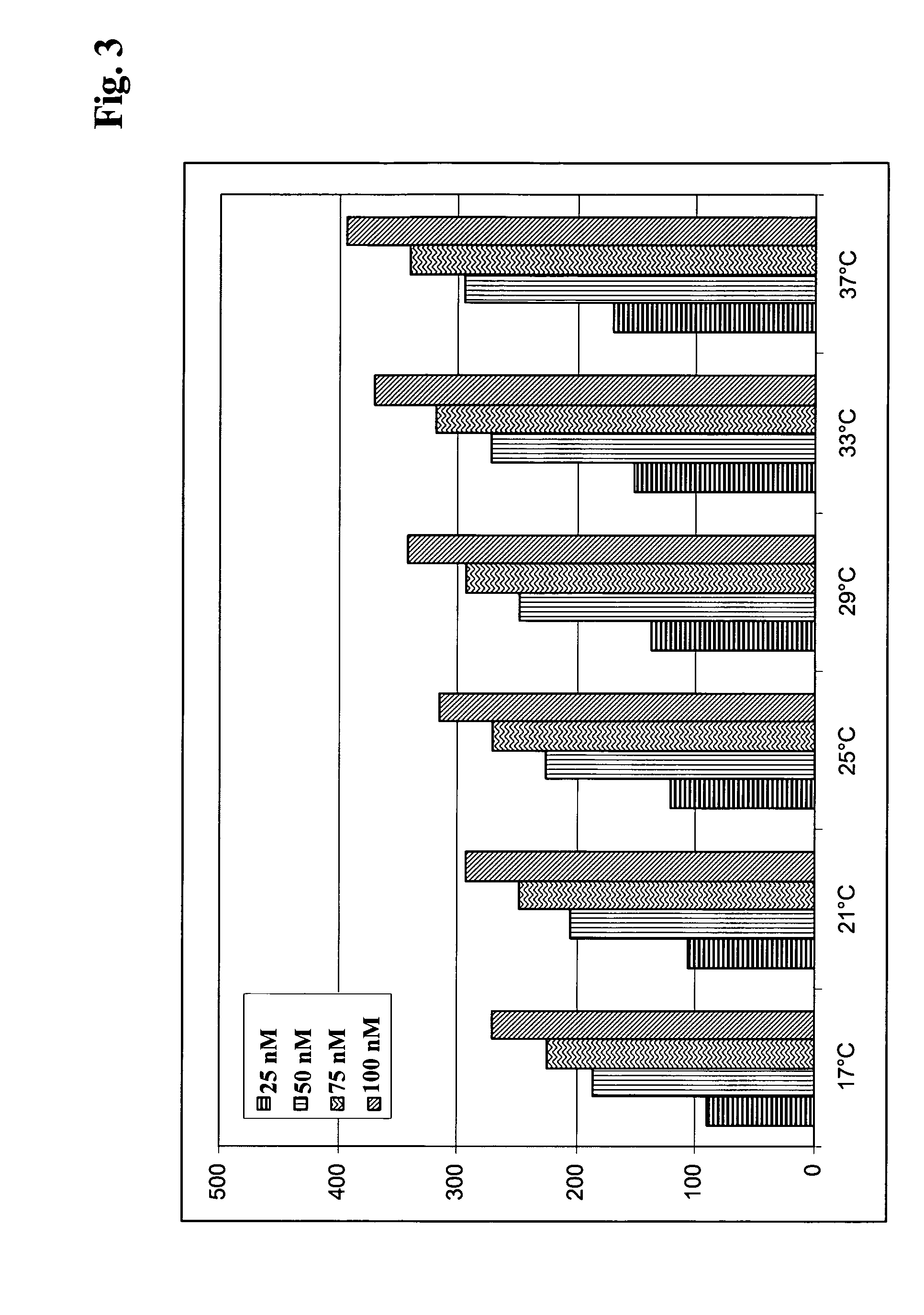Method to screen high affinity antibody
a high affinity antibody and antibody technology, applied in the field of diagnostic and therapeutic antibody development, to achieve the effect of large entropy change and negative entropic burden
- Summary
- Abstract
- Description
- Claims
- Application Information
AI Technical Summary
Benefits of technology
Problems solved by technology
Method used
Image
Examples
example 1
Immunization of Mice
[0172]Balb / c mice 8-12 weeks old were subjected to intraperitoneal immunization with 100 μg human recombinant PTH (Parathyroid hormone) derivatives formulated as a KLH (keyhole limpet haemocyanin) fusion in complete Freud's adjuvant. Recombinant N-terminal and C-terminal PTH fragments as well as full length (1-84) PTH were used as antigens. PTH derivatives were produced synthetically by peptide synthesis.
[0173]The immunization was performed 4 times: initial boost, 6 weeks, 10 weeks and 14 weeks after the initial boost. The second and third immunization was done using incomplete Freud's adjuvant. The final boost was done i.v. using 100 μg antigen three days before the hybridoma fusion took place. The production of hybridoma primary cultures was done according to Köhler and Milstein (Kohler, G., et al., Nature 256(5517) (1975) 495-497). The hybridomas were isolated in 96-well micro titer plates (MTPs) by limited dilution and were screened for antigen binding by ELI...
example 2
Preparation of the CM5 Sensor Chip
[0174]The BIAcore A100 system under the control of the Software V.1.1 was prepared like follows: A BIAcore CM5 sensor (series S) was mounted into the system and was hydrodynamically addressed according to the manufacturer's recommendations. A polyclonal rabbit IgG antibody (R, Jackson ImmunoResearch Laboratories Inc., USA) at 30 μg / ml was immobilized at 10,000 RU on spots 1, 2, 4 and 5 in the flow cells 1, 2, 3 and 4 via EDC / NHS chemistry according to the manufacturer's instructions using 10 mM sodium acetate buffer pH 4.5 as pre-concentration buffer. The sensor surface was finally blocked with ethanolamine.
example 3
Kinetic Screening of Primary Hybridoma Culture Supernatants
[0175]Hybridoma culture supernatants from different PTH immunization campaigns conducted according to Example 1 were processed as outlined below.
[0176]The spots 2 and 4 of a sensor chip obtained according to Example 2 were used as a reference (1-2, 5-4). In order to capture antibody on the sensor surface hybridoma culture supernatants were diluted 1:5 with running buffer HBS-EP (10 mM HEPES pH 7.4, 150 mM NaCl, 1 mM EDTA, 0.05% P20, BIAcore) and were injected at 30 μl / min for 1 min. Subsequently, the respective antigen was injected at 30 μl / min for 2 min. association time. The dissociation phase was monitored for 5 min. Finally the surface was regenerated with a 2 min. injection of 100 mM phosphoric acid.
[0177]The sensor was preconditioned by repeated cycles of antibody capturing and regeneration. The monoclonal mouse antibody mAbM-1.20 IgG1k (Roche Diagnostics GmbH, Mannheim, Germany) was repeatedly injected for 2 min. at 3...
PUM
| Property | Measurement | Unit |
|---|---|---|
| Temperature | aaaaa | aaaaa |
| Temperature | aaaaa | aaaaa |
| Temperature | aaaaa | aaaaa |
Abstract
Description
Claims
Application Information
 Login to View More
Login to View More - R&D
- Intellectual Property
- Life Sciences
- Materials
- Tech Scout
- Unparalleled Data Quality
- Higher Quality Content
- 60% Fewer Hallucinations
Browse by: Latest US Patents, China's latest patents, Technical Efficacy Thesaurus, Application Domain, Technology Topic, Popular Technical Reports.
© 2025 PatSnap. All rights reserved.Legal|Privacy policy|Modern Slavery Act Transparency Statement|Sitemap|About US| Contact US: help@patsnap.com



